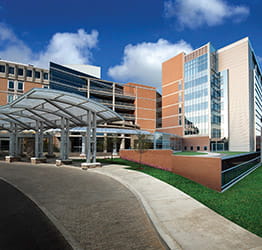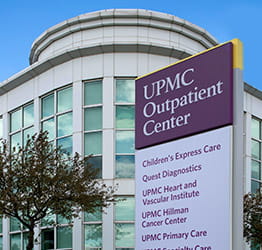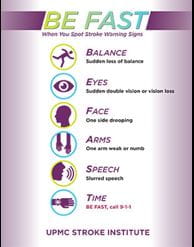On this page
What Is Ischemic Stroke?
Ischemic stroke occurs when a blood vessel in your brain becomes blocked, stopping blood flow and cutting off the oxygen supply to part of your brain. The blockage may be caused by a blood clot that forms in one of the arteries that supplies blood to your brain — or a blood clot that forms in your heart, lungs, or another artery and travels to your brain.
What are the types of ischemic stroke?
There are two types of ischemic stroke, including:
- Thrombotic stroke — Caused by a blood clot (thrombus) that forms within an artery that supplies blood to your brain.
- Embolic stroke — Caused by a blood clot (embolus) that forms in another part of your body, such as your heart or lungs, and travels to your brain.
An ischemic stroke is different from a hemorrhagic stroke. An ischemic stroke is caused by a blockage in a blood vessel, and a hemorrhagic stroke is caused by bleeding in the brain.
What causes ischemic stroke?
Ischemic stroke can be caused by a variety of conditions, including:
- A blood disorder that increases the risk of blood clots (hypercoagulability).
- Hardening of the arteries (atherosclerosis).
- Heart attack (myocardial infarction).
- Infection or inflammation of brain arteries.
- Irregular heartbeat, such as atrial fibrillation.
- Narrowing of one of the main arteries in the neck (carotid artery disease).
- Small hole in the heart chamber wall (atrial septal defect).
- Small vessel disease (lacunar infarction).
What are ischemic stroke risk factors and complications?
Ischemic stroke risk factors
You may be at higher risk of ischemic stroke if you have risk factors including:
Complications of ischemic stroke
An ischemic stroke is a medical emergency that happens when blood flow is cut off to a portion of the brain. Without blood flow, brain tissue can die within 3-4 minutes.
Ischemic stroke requires fast treatment to reduce the risk of disability and death. If left untreated, ischemic stroke can cause death or a permanent loss or impairment of function controlled by the affected part of your brain.
How can I prevent ischemic stroke?
You may not be able to control some of your ischemic stroke risk factors, such as aging. However, preventing heart disease and chronic conditions can reduce the risk that you will have an ischemic stroke. You may be able to reduce your risk by:
- Eating a diet that is rich in fruits, vegetables, and whole grains.
- Exercising and maintaining a healthy weight.
- Maintaining normal blood pressure and cholesterol levels.
- Avoiding smoking.
- Limiting alcoholic beverages.
How common is ischemic stroke?
The U.S. Centers for Disease Control and Prevention estimates that more than 795,000 people in the U.S. experience a stroke each year. Ischemic strokes make up 87 percent of all strokes.
Back to top.
What Are the Signs and Symptoms of Ischemic Stroke?
Symptoms of an ischemic stroke usually occur suddenly and may include:
- Difficulty walking or moving.
- Dizziness.
- Loss of consciousness or seizure.
- Nausea or vomiting.
- Numbness or weakness in your face or limbs that may affect only one side of your body.
- Problems with balance or coordination.
- Severe headache.
- Trouble speaking or understanding.
- Vision problems in one or both eyes.
How do doctors determine the severity of an ischemic stroke?
Doctors use the National Institutes of Health Stroke Scale (NIHSS) to assess symptoms and stroke severity.
The assessment involves a series of scored tests performed during a physical exam. The total score is used to guide treatment decisions and predict prognosis. The NIHSS levels of stroke severity are:
- 0 — No stroke.
- 1-4 — Minor stroke.
- 5-15 — Moderate stroke.
- 15-20 — Moderate/severe stroke.
- 21-42 — Severe stroke.
When should I see a doctor about my ischemic stroke symptoms?
A stroke is life-threatening and needs emergency treatment. If you have symptoms of a stroke, dial 911 right away — don’t wait. Getting fast treatment can reduce your risk of disability and death.
Back to top.
How Do You Diagnose Ischemic Stroke?
To diagnose ischemic stroke, your doctor will perform a physical exam and order imaging tests.
What to expect during your visit
When you arrive at the hospital, your doctor will:
- Perform a physical exam.
- Order imaging or other tests.
- Review your health history and medications.
Tests to diagnose ischemic stroke
Your doctor may request imaging tests to examine how blood flows through the blood vessels in your brain and check for signs of ischemic stroke. Diagnostic tests for ischemic stroke include:
- CT or MR angiogram — Also known as arteriography or an arteriogram, this test uses x-rays or magnets and a special contrast dye to look for problems with the blood vessels in your brain.
- CT scan — A test that creates images of your brain and is used to diagnose stroke, brain aneurysm, or another type of brain injury.
- Doppler ultrasound — A noninvasive test that uses ultrasound waves to measure blood flow through your arteries and veins.
- MRI — Uses a combination of large magnets, radio frequencies, and a computer to produce detailed images of your brain.
Ischemic stroke prognosis
Ischemic stroke is a life-threatening condition. Your prognosis after an ischemic stroke will depend on the severity of the blockage, what part of your brain is affected, and how quickly you receive medical care.
What can I expect for ischemic stroke recovery?
Your recovery after an ischemic stroke will depend on the amount of brain damage you experienced and the symptoms you have. Some people have no deficits after a stroke and can resume their normal activities, but others experience severe side effects that cause loss of independence.
Side effects after stroke may include:
- Cognitive problems with thinking, reasoning, or judgement.
- Difficulty swallowing, speaking, or understanding speech.
- Incontinence.
- Memory problems.
- Mood disorders, such as depression, anxiety, or mood swings.
- Pain, numbness, or tingling.
- Problems with balance or coordination.
- Trouble regulating emotions and emotional outbursts.
- Vision problems.
- Weakness, paralysis, or problems with movement.
You may need inpatient or outpatient physical, occupational, or speech therapy after your stroke to help improve or manage side effects. Some people may experience improvement in their side effects over time as their brain begins to heal, but other people may have permanent disability.
Back to top.
How Do You Treat Ischemic Stroke?
The goals of ischemic stroke treatment are to restore blood flow by removing the blockage and prevent permanent brain damage that can lead to disability and death. Treatment for ischemic stroke depends on:
- The location, extent, and duration of the blockage.
- Your overall condition.
Treatment may include:
Medication to treat ischemic stroke
Your doctor may administer emergency medications to treat ischemic stroke and related symptoms, including:
- Thrombolytics or fibrinolytics — Known as clot-busting medications, these drugs dissolve blood clots that cause blocked arteries in your brain. A common medication is called tissue plasminogen activator (tPA). To be effective, these medications must be given within a few hours of the start of your stroke symptoms.
- Neuroprotective medications — These medications protect your brain from damage caused by lack of oxygen.
- Anti-inflammatory medications — These medications help to control brain swelling.
After you receive emergency care for ischemic stroke, your doctor may prescribe other medications for you to take on a short- or long-term basis, including:
- Antiplatelet medications, such as aspirin and clopidogrel.
- Blood pressure medications, such as diuretics and beta blockers.
- Blood-thinners (anticoagulants), such as warfarin.
- Statins to control cholesterol levels.
Endovascular procedures to treat ischemic stroke
Endovascular procedures provide minimally invasive treatment for ischemic stroke using thin, flexible tubes called catheters. There are two types of endovascular procedures: Procedures to remove the blood clot, and procedures to administer clot-dissolving medication directly to the site of the blood clot in your brain.
During an endovascular procedure, your doctor will:
- Insert a small, thin tube called a catheter through a small incision in your groin.
- Use x-ray imaging to guide the catheter to the site of the blood clot in your brain.
- Use a special tool to remove the blood clot or administer medication to dissolve your blood clot.
- Remove the catheter and close your incision.
Surgery for ischemic stroke
If you are not a candidate for a minimally invasive endovascular procedure, your doctor may recommend a procedure called craniotomy to treat your ischemic stroke. It involves removing a piece of your skull to access your brain and remove the blood clot.
Why choose UPMC for ischemic stroke care?
When you choose UPMC for ischemic stroke care, you will receive:
- Access to world-class neurosurgery expertise — Our world-renowned experts treat the full spectrum of neurosurgical conditions using the latest diagnostic and treatment techniques.
- A full range of treatment options — We offer nonsurgical care, as well as minimally invasive and traditional open surgical procedures, allowing us to effectively treat all types of disorders while reducing your risk of complications.
- Multidisciplinary care — We partner with neurologists, rehabilitation specialists, and other medical experts to provide complete care that optimizes your recovery and quality of life.
Back to top.
















